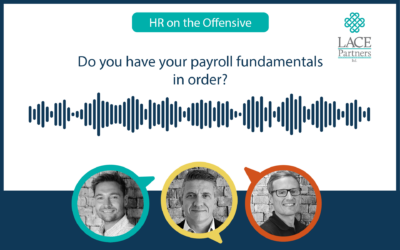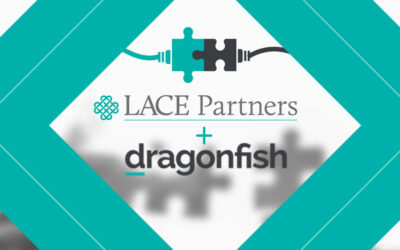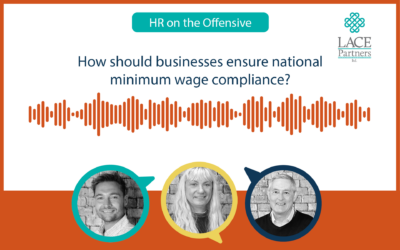As the latest round of releases from the various cloud software providers looms on the horizon, Celine from our HR Tech Practice took some time to look at some of the ways in which organisations need to prepare their business for any functional updates that may about to land on their doorstep.
Working with our clients over the recent years, I’ve realised how much “release management” is under-estimated in the post go live/BAU world. Under-estimated both in terms of importance (answering the “why” you need to do it) and in terms of planning, preparation and execution (answering the “how” to do it).
In this blog, I will give you my and the LACE perspective to answer the “why” and some tips to answer the “how”.
Why ongoing release management is key for you
When you buy a SaaS platform you are paying for the benefits of an ever-evolving system. That is particularly relevant in these challenging times. During the COVID-19 global pandemic, all tech providers worked hard to develop new functionality and features that would help to support their customers and I wouldn’t be surprised to see some of these new features coming up in the next releases, as a result.
However, it isn’t just in times of crisis that you will see ongoing improvements to your HR system. When you notice issues with the platform, or if you have suggestions for improvements, by working with your software provider you are effectively contributing towards its ongoing evolution. But it’s not just you; if you do spot that something is not quite right or not optimal, you can be sure that others do as well. By keeping on top of those functional releases you are going to benefit greatly from all of the collective testing and improvements that are happening amongst the network of customers and organisations, what some of them call their “community”.
In some instances at LACE Partners, we have even seen how HRIS teams have been trying to fix either bugs or underlying issues from the original design, when in fact one of the enhancements coming from the releases would have already corrected the problem. Conscious that it could be a hit or a miss, I would always recommend to my clients to take time to read the release notes and understand and assess what could be in there for them as a business as a minimum.
Even if you realise that you don’t need anything from the release or you don’t have time or capacity to take new features right away, at least you know what’s available and can incorporate it into your HR systems roadmap. Of course it is very easy to say “we are too busy, we’ll look into this later” or to push it down the list of priorities and fall five or six releases behind in no time, but in reality how much extra time will you be spending catching up afterwards if you leave it for two years, for example?
The good news is that there are mechanisms you can leverage as a customer. Let’s spend some time on the “how”.
How can you prepare for your next release?
As a start, you need to recognise that release management is an ongoing activity and should form an essential part of your life after “go live”. You need to plan out the actions and put clear milestones in your HRIS calendar; those releases are planned out in advance and the process remains roughly the same each time. For the first time, work with your customer success manager to understand the mechanism, key dates specific to your provider and plan accordingly.
Make sure you put some money to one side at the beginning of your fiscal year, include a pot of your HRIS budget fully dedicated to this activity and get your resourcing and budget planning right, factoring in time to assess how much time and resources you might need to dedicate to execute each release.
Take time to understand what the new features and functionalities are before the release. Ensure subject matter experts (SMEs) and functional leads sit down and assess if the new functional enhancements are needed, what the impact it will be on the business, the HR ways of working, the existing processes and policies, as well as how it will impact your workforce (employees and managers).
Leverage your internal and external communities. Communicate with designated representatives within the business at different levels to get their feedback on what the latest updates mean. Get that ‘buy in’ from the business so that when the release is ready your communications plan for rolling out the changes is also underway. But also leverage your external peer community (outside of your organisation). As previously mentioned, lots of other organisations are providing their ideas and suggestions for updates, which also means that these businesses are going through the same process as you. Some providers will have “preparation centres/hubs” and getting support from these areas has proved valuable for many businesses we speak to on a regular basis.
Seek help and support from external third parties if needed. At LACE for example, we’ve been working with some of our clients to define what features could improve either their current architecture or design, but their also ways of working. As we know our clients, we delve deep into the heart of what their business requires to make the most of their platform, advise them on what’s best for them and align their HRIS roadmap accordingly. Whilst you can get support from peers “i.e. other businesses who are in a similar situation to you” or from advisory partners, no two organisations are alike and you remain in the driving seat, knowing what’s best for you and by making the right call for your business.
What does ‘great’ look like for a successful release management strategy?
This will inevitably vary from organisation-to-organisation depending on each requirement, but we have seen a few key traits that emerge amongst businesses that consistently get release management right, including:
- Stable platform: This sounds obvious but being on a stable platform is key to the success of managing ongoing releases. We see many businesses that still try to fix bugs or catch up with their original design a long time after they have gone “live”. As a result, thinking about enhancements or new functionalities becomes overwhelming and they would rather put that to one side.
- Aligning the HR tech strategy onto the HR strategy: There is no point implementing a new HR technology if it does not drive business, HR and workforce strategies simultaneously. Successful organisations have a clearly defined HR tech roadmap with long-term ambitions. For example, if you are looking at robotics, focus on those elements in any release notes so you get a better understanding of what your software provider is planning on releasing in that space. Clients who understand the benefits of functional releases by spending time understanding new features or innovation coming up and how these latter will help in the long run, are the most efficient, innovative and competitive on the market.
- Business ‘buy-in’: If your organisation and the people within it understand (and have been clearly communicated to about) the benefits of the changes in the system, the end-user adoption will be swifter and will demonstrate efficiency to the business quicker. It also helps to drive innovation as the people within the business are more willing to suggest systems improvements if they feel their ideas will be taken forward.
To conclude, I’d always recommend taking the pain of building your release management process and embed it into your BAU approach before implementation or as soon as possible after ‘go live’ to enjoy its benefits in the longer run.
Where next?
If you would like to talk to LACE Partners about how we can support your approach to release management you can get in contact with Celine via LinkedIn, or drop her an email at celine@lacepartners.co.uk.









